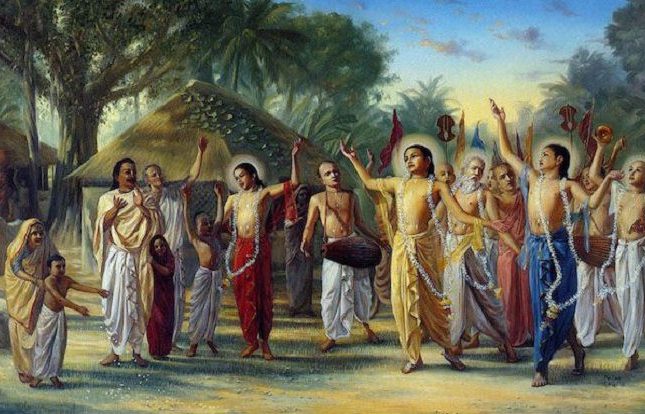SATYUGA (SATJUG) In Satyuga the chariot is of contentment and charioteer of Dharma (Piety). (Var Asa, M. l, p. 470) In Satyuga everyone spoke Truth, in every home, there were enlightened persons absorbed in devotion. In Satyuga, the Dharma-bull stood on all its four feet, the enlightened person contemplates and knows it. (Ramkali M. 3, p. 880) In Satyuga everybody was absorbed in Truth and contentment. The Truth pervaded in its profundity.
The True Lord, in His True Command, judges the Truth….. In Satyuga, everyone spoke Truth, the True Lord, pervaded as Truth; there was truth in mind and mouth, the dispeller of fear and illusion; the enlightened person had friendship with Truth. (Maru M. l, p. 1023) In Satyuga or Krityayuga, there is cent percent Dharma. The Dharma-Bull is said to be four-legged. The fourfold virtues of truthfulness, devotion, kindness and charity are practised.
It is written in Mahabbarata that there were no divisions of gods and demons, there was no buying and no selling, no efforts were made by men, the fruit of the earth were obtained by mere wishes. There was no disease, no malice, no hatred, no cruelty, no affliction, no fear and no jealousy. The people of all the professions fulfilled their duty and everyone was devoted to the Lord. See : Yugas.
References :
1. Kohli,Surindar Singh ed,Dictionary of Mythological References in Guru Granth Sahib 1993
Satya Yuga, often referred to as the Golden Age, is the first and most virtuous of the four yugas (cosmic ages) in Hindu mythology, followed by Treta Yuga, Dvapara Yuga, and Kali Yuga. It is considered a time of perfection, righteousness (dharma), and divine harmony, where truth and morality prevail.
Characteristics of Satya Yuga:
- Duration:
- Satya Yuga is said to last for 1,728,000 years, equivalent to 4,800 divine years. It is the longest of the four yugas.
- Dharma (Righteousness):
- In Satya Yuga, dharma stands on all four legs (truth, compassion, austerity, and charity), representing a time of perfect morality and virtue.
- Truth (Satya) is universal, and beings live in complete harmony with one another and nature.
- Human Life and Characteristics:
- Humans in Satya Yuga are described as pure, selfless, and spiritually advanced. They live long lives—up to 100,000 years—and are free from diseases and suffering.
- Society is egalitarian, without conflict, greed, or dishonesty.
- Divine Presence:
- It is a time of close connection to divinity. Lord Vishnu frequently incarnates during Satya Yuga to guide and sustain the world.
- Meditative practices, penance (tapasya), and devotion are prevalent, enabling beings to attain liberation (moksha).
- Symbolism:
- Satya Yuga symbolizes a state of ideal existence, where spiritual wisdom and universal truth govern life.
- This age represents the peak of the cosmic cycle, from which gradual moral and spiritual decline occurs in subsequent yugas. Spiritual Themes:
- The idea of Satya Yuga reflects the aspiration for a time of universal peace and truth.
- It inspires individuals in later yugas to strive for righteousness, even as the world faces increasing challenges and moral decline.
Satya Yuga’s ideals set the foundation for understanding the cyclical nature of time in Hindu cosmology.



